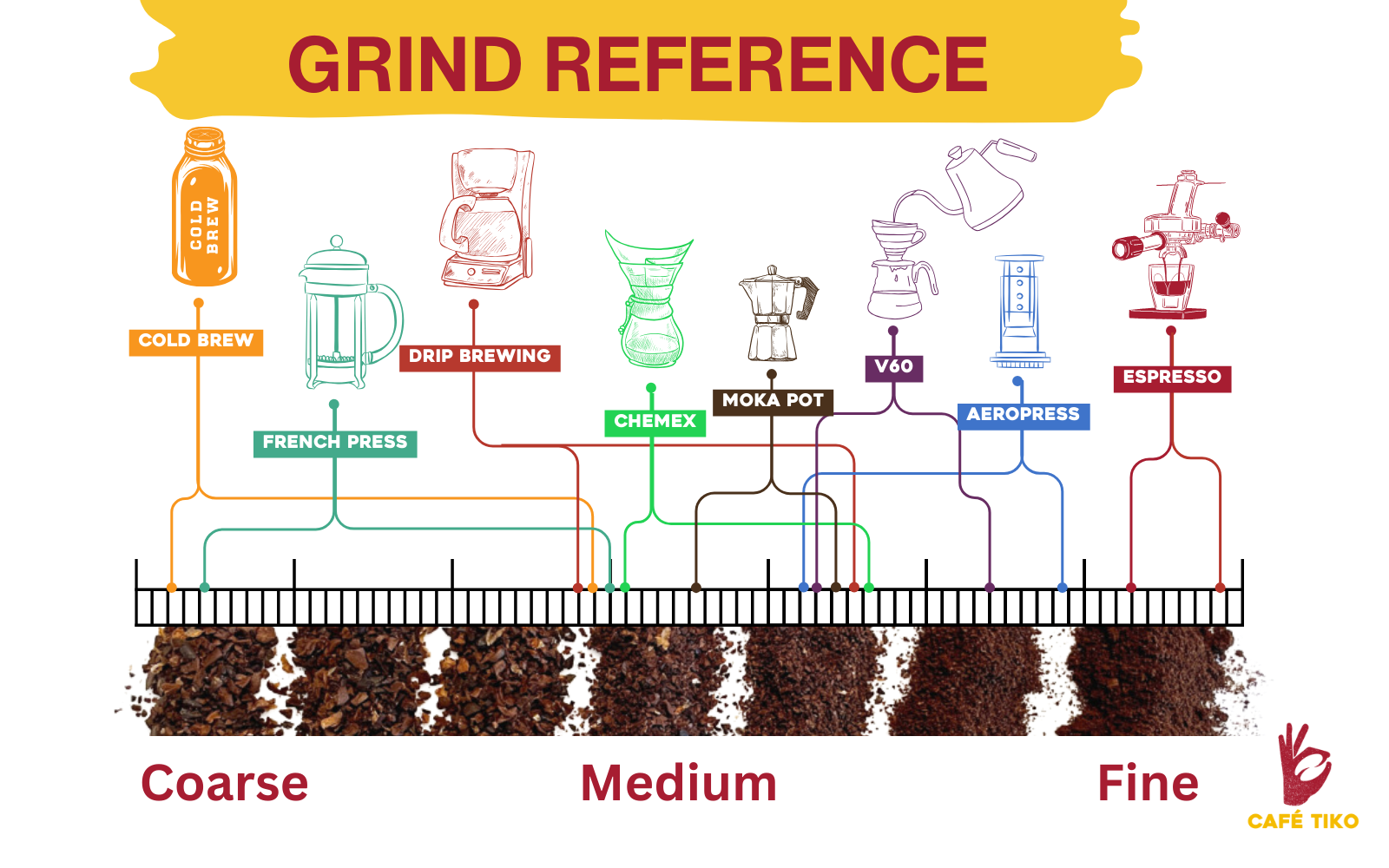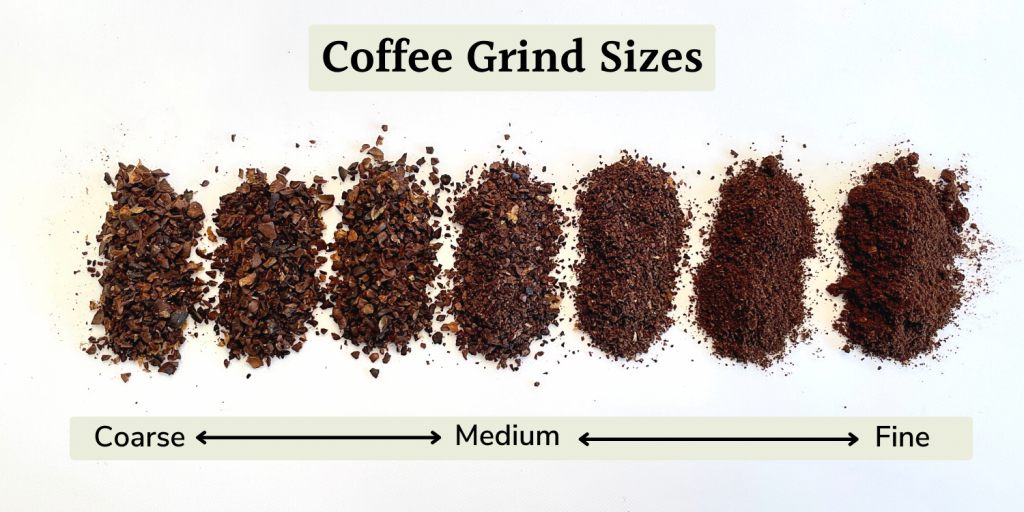Essentials of grinding and coffee making methods
In this description we show you the essentials of coffee grinding and its vital connection to the variuos coffee making methods.
What is usually true that you can't combine anything with anything else, is very much true, and even vital for coffee making. The various methods require different grind size to get the maximum quality out of our coffee.
So, let's see!
Methods that use filters, such as drip brewing, pour-over (including the V60 and Chemex), and AeroPress, all share a common principle of passing hot water through coffee grounds, extracting flavors, and filtering out sediment. The key differences lie in the brewing equipment and techniques.
- Drip Brewing (Drip Coffee Maker): Drip brewing involves using an automatic coffee machine that dispenses hot water over a paper or metal filter containing coffee grounds. It's known for its convenience and ability to make large quantities of coffee at once.
- Pour-Over (Manual Pour-Over Cones, including the V60 and Chemex): Pour-over is a manual method where hot water is poured over coffee grounds in cone-shaped filters (such as the V60 and Chemex). The brewer has control over water flow and distribution, allowing for precision and customization in the brewing process.
- AeroPress (Plunger and Chamber): The AeroPress combines immersion and pressure brewing. Ground coffee is steeped in hot water, and then a plunger is used to force the coffee through a paper or metal filter. It's known for its portability and versatility, offering various brewing techniques.
Key differences among these methods we need to be aware of:
- Drip brewing is automatic, while pour-over (including the V60 and Chemex) and AeroPress are manual methods.
- Pour-over (including the V60 and Chemex) allows for more control over brewing variables like water temperature and pouring technique.
- AeroPress is highly portable and versatile, suitable for various brewing styles, including espresso-like shots.
- Pour-over (including the V60 and Chemex) and AeroPress require paper or metal filters, while some drip coffee makers use reusable metal filters.
- Drip brewing is suitable for brewing larger quantities, making it ideal for serving groups.
- AeroPress is known for its quick brewing time, while pour-over (including the V60 and Chemex) can take a bit longer due to manual pouring.
- Pour-over (including the V60 and Chemex) and AeroPress often result in a cleaner, more nuanced cup of coffee due to the precision and control they offer.

These differences provide coffee enthusiasts with various options to suit their preferences, whether they prioritize convenience, control, or portability in their coffee brewing experience.
For filter-based methods like drip brewing and pour-over, use a medium-coarse grind, similar to sea salt.
For AeroPress, use a finer grind, resembling table salt.
The grind size affects extraction and flavor, with coarser grinds for slower methods like drip and pour-over and a finer grind for the quicker AeroPress.
Cold brew is a coffee brewing method that involves steeping coarsely ground coffee beans in cold water for an extended period, typically 12 to 24 hours. The result is a smooth, low-acid coffee concentrate that is often diluted with water or milk before serving. Cold brew is known for its refreshing, less bitter flavor and is a popular choice for a chilled, summer-friendly coffee option.
Use a very coarse grind for cold brew. The coffee grounds should be similar in size to breadcrumbs or even a bit coarser. The coarse grind allows for a slow extraction over an extended steeping period, resulting in a smoother and less acidic cold brew.
The Moka pot, also known as stovetop espresso, is a classic coffee brewing method. It involves water being forced through finely ground coffee under pressure, producing a strong, rich coffee similar to espresso.
Moka pots are stovetop devices, making them accessible and affordable. They're known for their convenience and ability to create espresso-like coffee at home.
For the Moka pot, use a medium-fine grind, resembling granulated sugar or sea salt.
It should be finer than what you would use for a French press but coarser than espresso. The medium-fine grind is suitable for the Moka pot's pressure-based brewing method.
Espresso is a concentrated coffee brewing method that involves forcing hot water through finely ground coffee beans under high pressure. It results in a rich, intense coffee shot with a layer of crema on top. Espresso serves as the base for various coffee beverages, such as lattes and cappuccinos, and is cherished for its bold flavor and versatility.
Espresso requires an exceptionally fine grind, almost as fine as table salt or even finer. The coffee grounds should feel like fine powder.
The fine grind size is essential for the high-pressure extraction process of espresso machines, resulting in a concentrated and flavorful shot of coffee.

The Turkish cezve, also known as Turkish coffee, is a traditional method of coffee preparation. Finely ground coffee is combined with cold water and optional sugar in a small pot called a cezve or ibrik.The mixture is heated gradually, allowing foam to form on the surface. It is served in small cups, preserving its rich, bold flavor and often accompanied by sweets.
Turkish coffee holds cultural significance and is cherished for its strong, aromatic taste and social traditions.
For a Turkish cezve, use an extremely fine grind, often referred to as "Turkish coffee grind." The coffee grounds should be as fine as talcum powder or powdered sugar. This ultra-fine grind is crucial for the traditional preparation of Turkish coffee.
As we can see, grind size is a critical factor in coffee brewing, as it affects the rate of extraction and the overall flavor profile of the coffee. Using the appropriate grind size for each brewing method ensures that you achieve the desired taste and quality in your coffee.
Now being aware of these essentials, it's time for you to carefully select a coffee (and equipment if you need) from our offering, and start your experiments!
Finally, my secret tip: the most I like the freshly roasted El Tucán, grinded medium-coarse, poured-over and served with tonic water like it would be a cold brew - so it's totally OK to mix!

